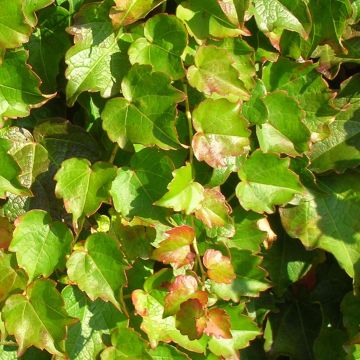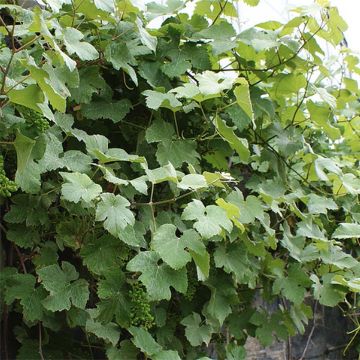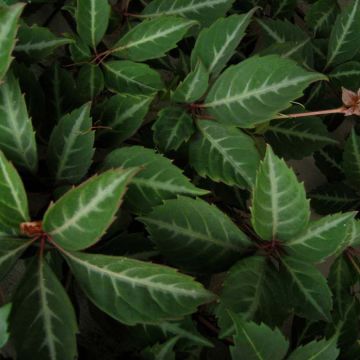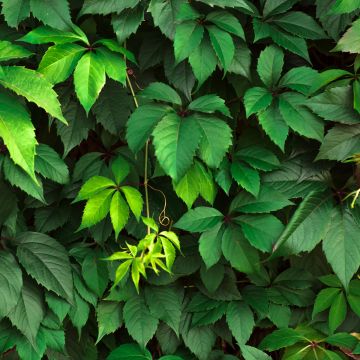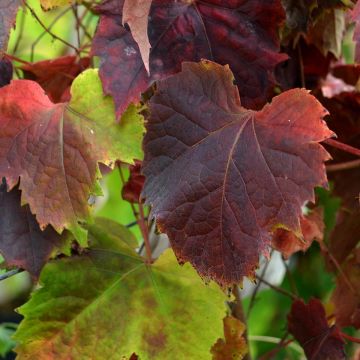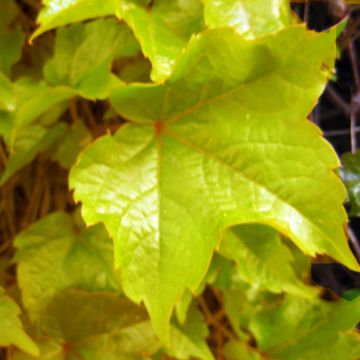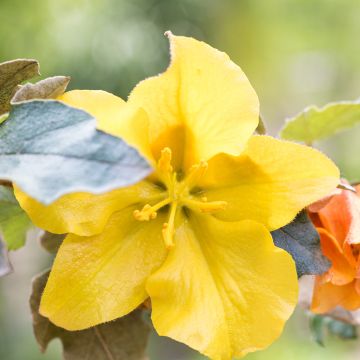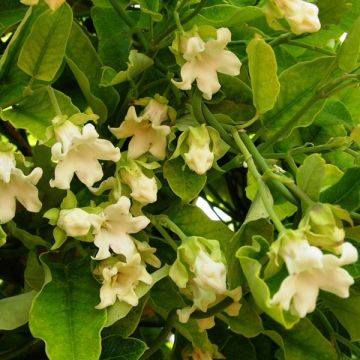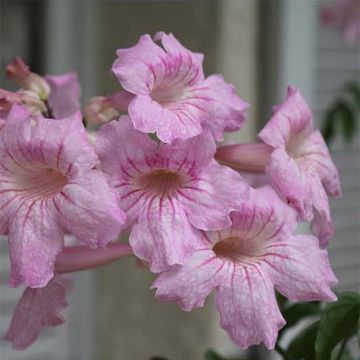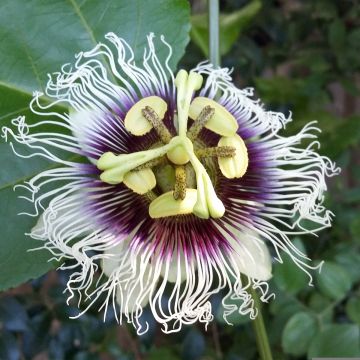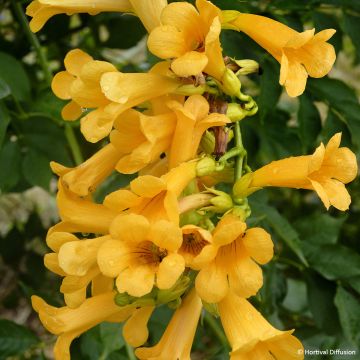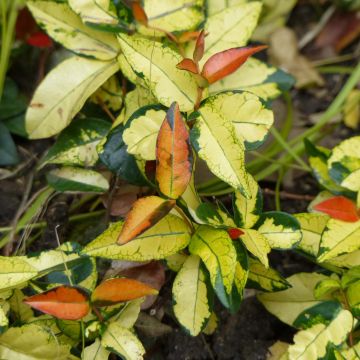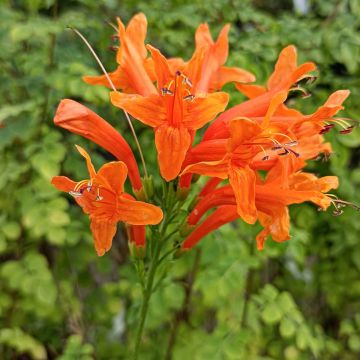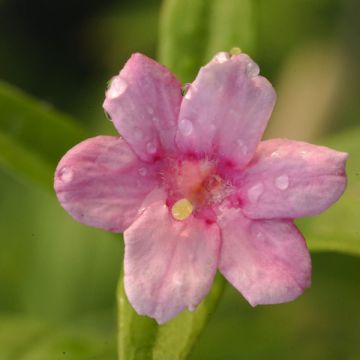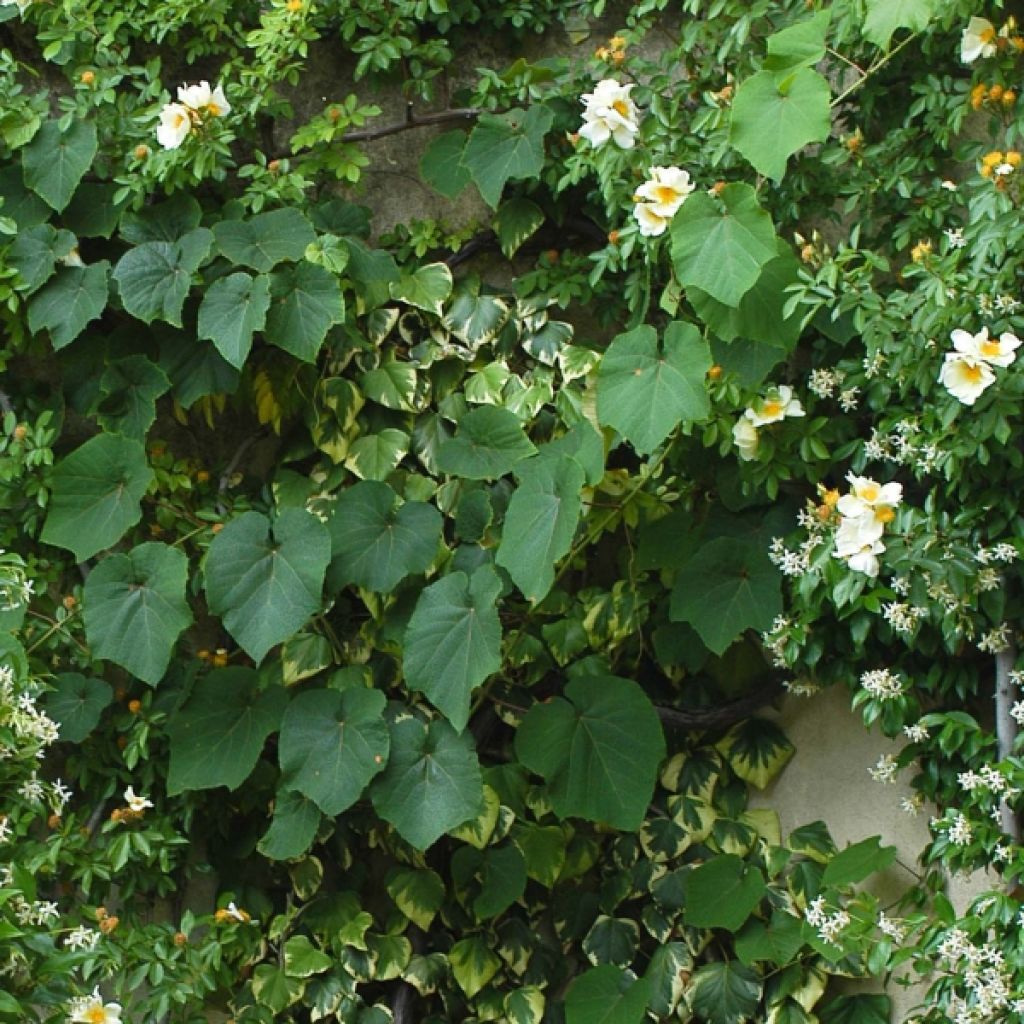

Vitis coignetiae - Ornamental Vine
Vitis coignetiae - Ornamental Vine
Vitis coignetiae
Crimson Glory Vine
This item cannot be shipped to the selected country
Delivery charge from €5.90
Delivery to Corse prohibited
More information
Schedule delivery date,
and select date in basket
This plant carries a 6 months recovery warranty
More information
We guarantee the quality of our plants for a full growing cycle, and will replace at our expense any plant that fails to recover under normal climatic and planting conditions.
From €5.90 for pickup delivery and €6.90 for home delivery
Express home delivery from €8.90.
Delivery to Corse prohibited: UE law prohibits the import of this plant from mainland France to Corse as part of the fight against Xylella fastidiosa. Please accept our sincere apologies.
More information
Does this plant fit my garden?
Set up your Plantfit profile →
Description
The Vitis coignetiae or Coignet Vine is a beautiful ornamental vine, vigorous and climbing, it is distinguished by its large heart-shaped leaves, light green on the top, covered with a grey fuzz on the underside. In autumn, the leaves gradually turn yellow, then coppery orange and finally a sensational wine red to scarlet red. Like all climbers, it climbs by clinging to its support through tendrils and can reach a height of 10 to 15 meters (33 to 49 feet) when mature! In late summer, it produces dark blue, inedible fruits. Hardy and undemanding, it thrives in the sun, in ordinary but well-drained soil, preferably neutral to limestone.
The Coignet Vine belongs to the Vitaceae family like wine grapes. Among the many cultivated ornamental vine species, this species is more oriental, it comes from Asia, northern Japan, and Korea where it naturally grows in cold and humid regions at high altitudes, which makes it very hardy, it can withstand temperatures down to -15°C (5°F). This ornamental vine produces large vigorous stems with tendrils at the axil of the leaves that wrap around and cling to all types of wood. When mature, it can reach a height of 10 to 15 metres (33 to 49 feet) depending on the growing conditions. Its final shape will depend on the pruning practiced and it is advisable to train it on wire and trellis it well. The mature, heart-shaped leaves can reach up to 30 cm (12in) in diameter, their lamina is light green and their underside is covered with a grey fuzz. The charm of this vine reaches its peak in autumn when the leaves turn wine red and then scarlet red before falling. The grapes are gathered in large clusters, the blue-black berries do not exceed 1 cm (1/2 in) in diameter and are not edible, although they are used in Korean medicine.
Easy to grow, Vitis coignetiae thrives in full sun or partial shade in any rich and well-drained soil. It will colonise the tops of trees in an exotic garden, creep over a large pergola, or be neatly trained against a house wall. Its light green colour in summer pairs well with white flowering plants. For example, combine it with the 'Sander's White Rambler' rambling rose with summer and autumn flowering. The roses will be highlighted against the vine's two successive foliage colours. It also pairs well with dark foliage plants such as 'Black Lace' elderberry or purple hazelnut, a purple beech. Asters at the base will create a very beautiful effect.
Report an error about the product description
Vitis coignetiae - Ornamental Vine in pictures
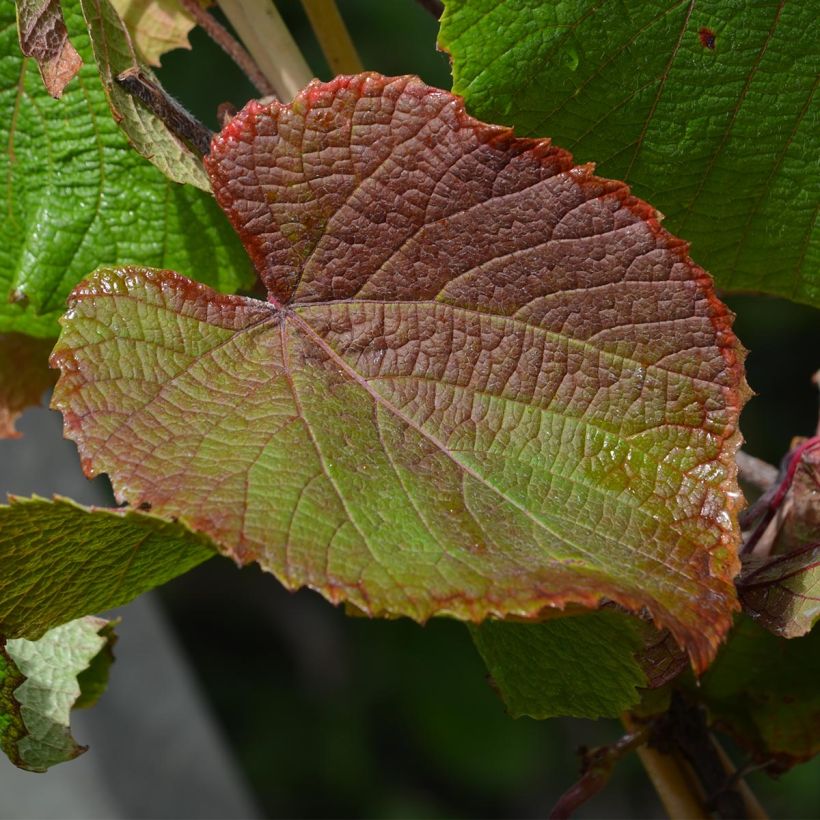

Plant habit
Flowering
Foliage
Botanical data
Vitis
coignetiae
Vitaceae
Crimson Glory Vine
East Asia
Other Parthenocissus - Virginia Creeper
Planting and care
The Vitis coignetiae should be planted in a regular and well-drained, neutral or limestone soil that is rather moist, which you will have enriched with an organic fertiliser. Choose a partially shaded or sunny exposure. It can withstand temperatures as low as -15°C (5°F). Prune it vigorously in February by cutting it back severely. Stake or train it to support and guide the branches.
Planting period
Intended location
Care
-
, onOrder confirmed
Reply from on Promesse de fleurs
Mediterranean climbers
Haven't found what you were looking for?
Hardiness is the lowest winter temperature a plant can endure without suffering serious damage or even dying. However, hardiness is affected by location (a sheltered area, such as a patio), protection (winter cover) and soil type (hardiness is improved by well-drained soil).

Photo Sharing Terms & Conditions
In order to encourage gardeners to interact and share their experiences, Promesse de fleurs offers various media enabling content to be uploaded onto its Site - in particular via the ‘Photo sharing’ module.
The User agrees to refrain from:
- Posting any content that is illegal, prejudicial, insulting, racist, inciteful to hatred, revisionist, contrary to public decency, that infringes on privacy or on the privacy rights of third parties, in particular the publicity rights of persons and goods, intellectual property rights, or the right to privacy.
- Submitting content on behalf of a third party;
- Impersonate the identity of a third party and/or publish any personal information about a third party;
In general, the User undertakes to refrain from any unethical behaviour.
All Content (in particular text, comments, files, images, photos, videos, creative works, etc.), which may be subject to property or intellectual property rights, image or other private rights, shall remain the property of the User, subject to the limited rights granted by the terms of the licence granted by Promesse de fleurs as stated below. Users are at liberty to publish or not to publish such Content on the Site, notably via the ‘Photo Sharing’ facility, and accept that this Content shall be made public and freely accessible, notably on the Internet.
Users further acknowledge, undertake to have ,and guarantee that they hold all necessary rights and permissions to publish such material on the Site, in particular with regard to the legislation in force pertaining to any privacy, property, intellectual property, image, or contractual rights, or rights of any other nature. By publishing such Content on the Site, Users acknowledge accepting full liability as publishers of the Content within the meaning of the law, and grant Promesse de fleurs, free of charge, an inclusive, worldwide licence for the said Content for the entire duration of its publication, including all reproduction, representation, up/downloading, displaying, performing, transmission, and storage rights.
Users also grant permission for their name to be linked to the Content and accept that this link may not always be made available.
By engaging in posting material, Users consent to their Content becoming automatically accessible on the Internet, in particular on other sites and/or blogs and/or web pages of the Promesse de fleurs site, including in particular social pages and the Promesse de fleurs catalogue.
Users may secure the removal of entrusted content free of charge by issuing a simple request via our contact form.
The flowering period indicated on our website applies to countries and regions located in USDA zone 8 (France, the United Kingdom, Ireland, the Netherlands, etc.)
It will vary according to where you live:
- In zones 9 to 10 (Italy, Spain, Greece, etc.), flowering will occur about 2 to 4 weeks earlier.
- In zones 6 to 7 (Germany, Poland, Slovenia, and lower mountainous regions), flowering will be delayed by 2 to 3 weeks.
- In zone 5 (Central Europe, Scandinavia), blooming will be delayed by 3 to 5 weeks.
In temperate climates, pruning of spring-flowering shrubs (forsythia, spireas, etc.) should be done just after flowering.
Pruning of summer-flowering shrubs (Indian Lilac, Perovskia, etc.) can be done in winter or spring.
In cold regions as well as with frost-sensitive plants, avoid pruning too early when severe frosts may still occur.
The planting period indicated on our website applies to countries and regions located in USDA zone 8 (France, United Kingdom, Ireland, Netherlands).
It will vary according to where you live:
- In Mediterranean zones (Marseille, Madrid, Milan, etc.), autumn and winter are the best planting periods.
- In continental zones (Strasbourg, Munich, Vienna, etc.), delay planting by 2 to 3 weeks in spring and bring it forward by 2 to 4 weeks in autumn.
- In mountainous regions (the Alps, Pyrenees, Carpathians, etc.), it is best to plant in late spring (May-June) or late summer (August-September).
The harvesting period indicated on our website applies to countries and regions in USDA zone 8 (France, England, Ireland, the Netherlands).
In colder areas (Scandinavia, Poland, Austria...) fruit and vegetable harvests are likely to be delayed by 3-4 weeks.
In warmer areas (Italy, Spain, Greece, etc.), harvesting will probably take place earlier, depending on weather conditions.
The sowing periods indicated on our website apply to countries and regions within USDA Zone 8 (France, UK, Ireland, Netherlands).
In colder areas (Scandinavia, Poland, Austria...), delay any outdoor sowing by 3-4 weeks, or sow under glass.
In warmer climes (Italy, Spain, Greece, etc.), bring outdoor sowing forward by a few weeks.

































